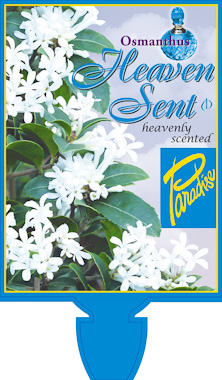When used in combination with the earlier flowering sister variety 'Pearly Gates', your garden will be filled with flowers and perfume all throughout spring!
Heaven Sent is a dense bushy form of Osmanthus that will produce masses of tubular white and sweetly fragrant flowers in spring. Plants are hardy and easy to grow in with full sun or shade and tolerant of light frost. The small dark foliage makes it ideal for hedging. When used in combination with the earlier flowering sister variety 'Pearly Gates', your garden will be filled with flowers and perfume all throughout spring!
Australia wide. May need some protection in extreme situations especially when young. Used in combination with the earlier flowering sister variety 'Pearly Gates', to extend flowering season.
Hedging
Borders
Garden feature
Container displays
- Borders
- Exotic
- Fragrance
- Hedging
- Scented Flowers
- Screening
- Shrubs
Full sun or shade
Will grow well in most soil types. Very poor or heavy soils may need some organic matter adding prior to planting.
Good drainage is essential. Improve heavier soils with plenty of well rotted organic matter prior to planting.
Space plants 1m apart for a hedge or screen
Dig the planting hole twice the width and depth of the pot that is being planted. Backfill with topsoil that has been improved with organic matter. Make sure that the rootball sits no lower than the surrounding soil.
Will tolerate periods of dry soil however regular watering and even moisture levels will result in stronger more vigorous plants.
Mulching is important to protect surface roots from extremes of temperature and helps to retain soil moisture. Mulch should be applied over the soil to 10cm deep. Keep mulch 5cm-10cm away from the base of the plant so as not to impede airflow which may lead to an increase in pest and disease problems.
Lightly prune after flowering to maintain shape. Extra trimming maybe required if a more formal hedge or shape is desired.
Feed plants in spring and summer using a high quality compete fertiliser.
 Look out for this label in all good garden centres.
Look out for this label in all good garden centres.